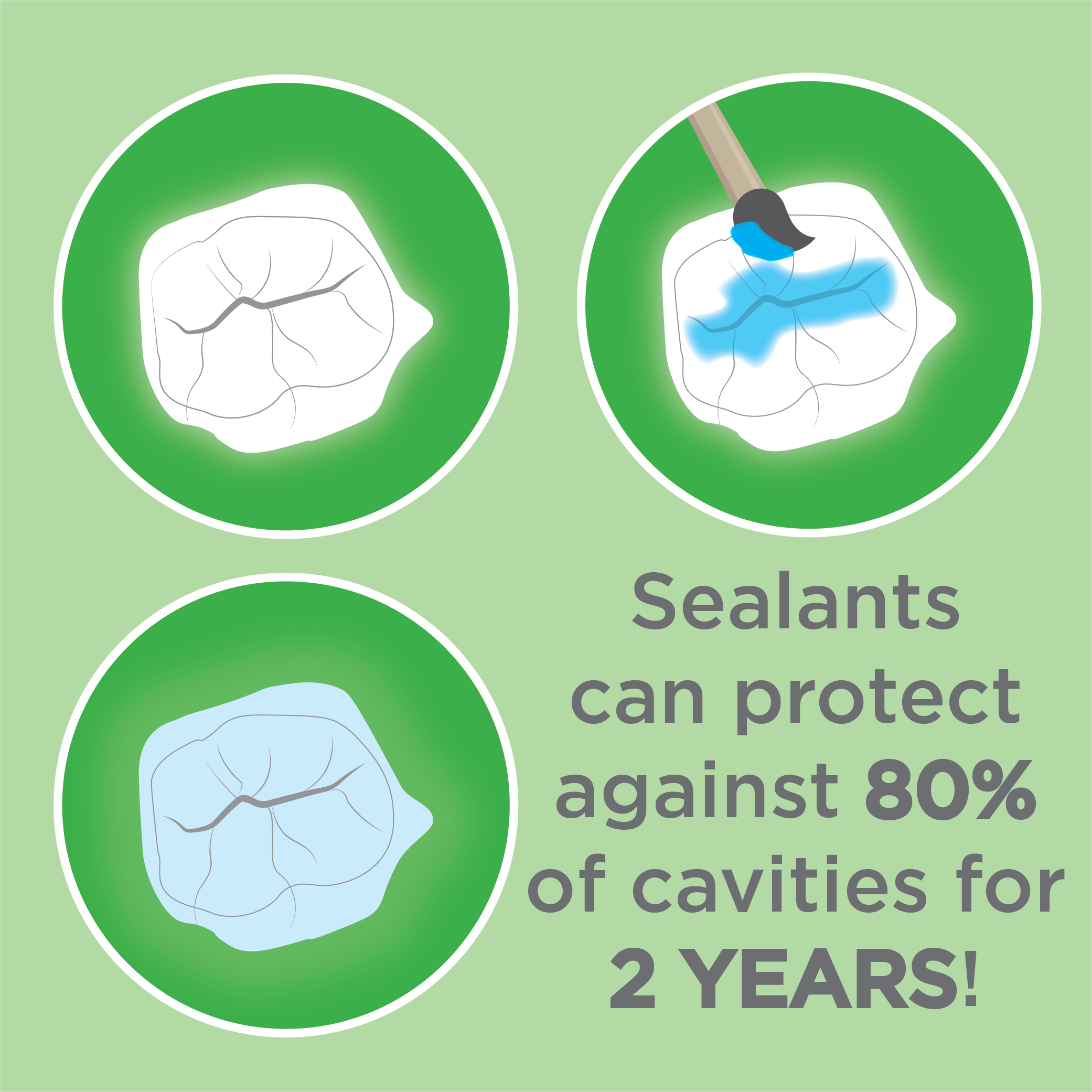According to the Centers for Disease Control and Prevention (CDC), dental caries (cavities) are the most common chronic disease in children ages 6 to 19. Dental sealants are an important part of cavity prevention, alongside a healthy diet, use of fluoride treatments, regular dental check-ups and a good oral health routine.
Regular brushing and flossing are very important to help remove food and dental plaque from your teeth. Your toothbrush cannot always clean the deep grooves on the biting surfaces of molars. These pits and fissures on the molar are where cavities will often develop in children.
A dental sealant is a thin plastic like material that seals those pits and fissures on the molar. This helps to prevent cavities by keeping plaque and sugar from building up on the back teeth.
Your dentist and/or hygienist may recommend sealants if your child is at risk for cavities. Sealants are most effective when applied soon after the permanent molars come into the mouth— about age 6 for first molars and age 12 for second molars.

Getting teeth sealed is an easy and painless procedure. The teeth are cleaned, dried and isolated so they stay dry. The chewing surface is prepared with a solution to help the sealant stick to the tooth. Then, the teeth are rinsed, dried and the sealant is applied so that it bonds to the tooth and hardens.
Once applied, sealants can protect against 80% of cavities for two years and continue to protect against 50% of cavities for four years. There are also some cavity-prone adults that can benefit from this treatment. Your dental team will look over the sealants at routine appointments to check if they need replacement.
Note: dental sealants are considered safe. There is a small amount of Bisphenol A (BPA) in sealants, but not enough to cause any harm.
Most Delta Dental plans cover dental sealants when indicated. To check your plan’s coverage, speak with your plan administrator or view your benefits and eligibility.
References:
- American Dental Association website. Dental sealants - www.ada.org/en/member-center/oral-health-topics/dental-sealants
- National Institute of Dental and Craniofacial Research website. Seal out tooth decay - www.nidcr.nih.gov/sites/default/files/2017-11/seal-out-tooth-decay-parents.pdf
This information in this post is for general educational purposes only and does not warrant or represent any information as related to health as specifically appropriate for you. It is not intended to be medical advice or replace the relationship that you have with your health care providers. You should always seek medical advice on any diagnosis or treatment from a qualified health care provider. The information is provided “as is” without any representations or warranties, express or implied.







